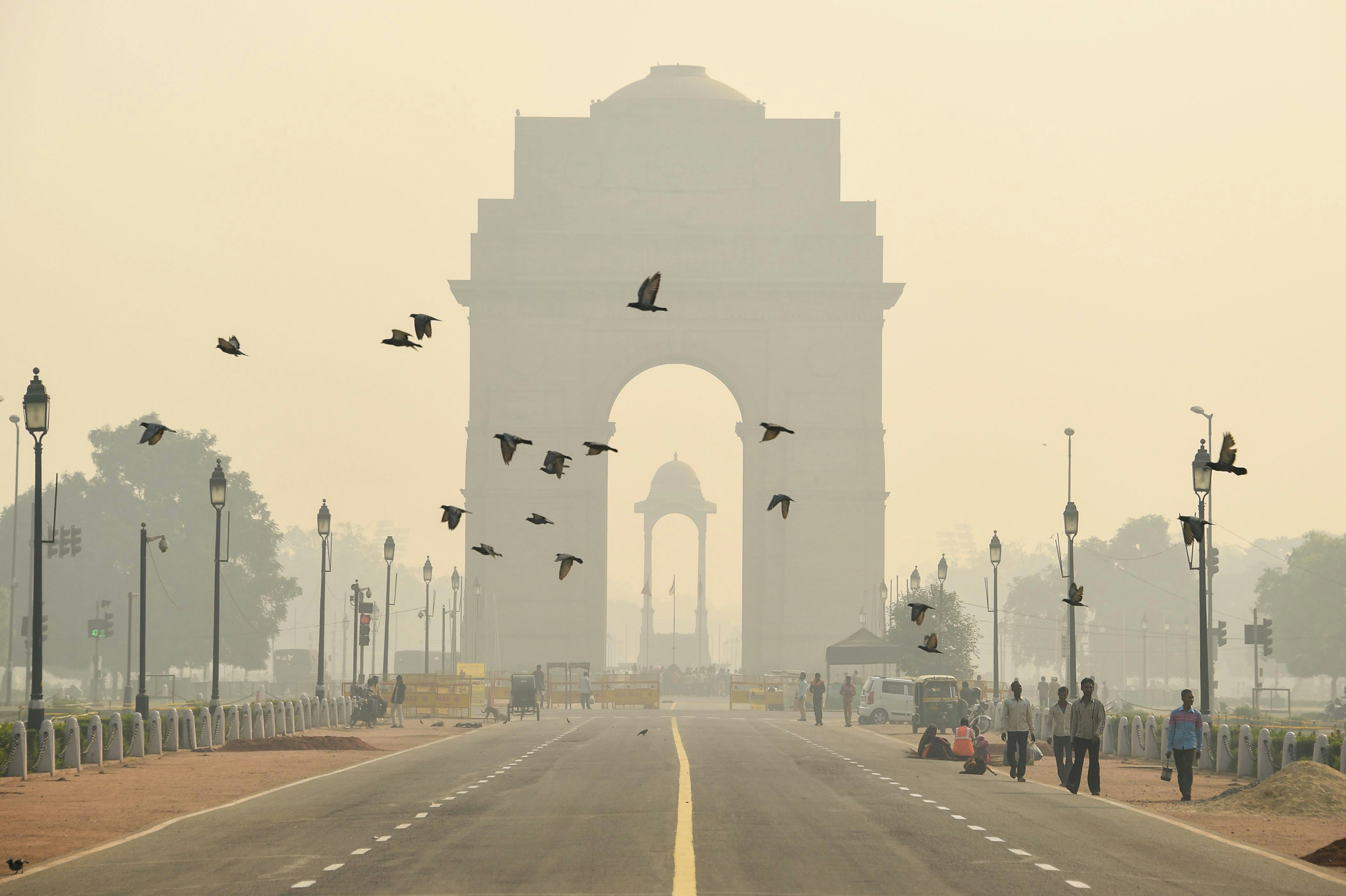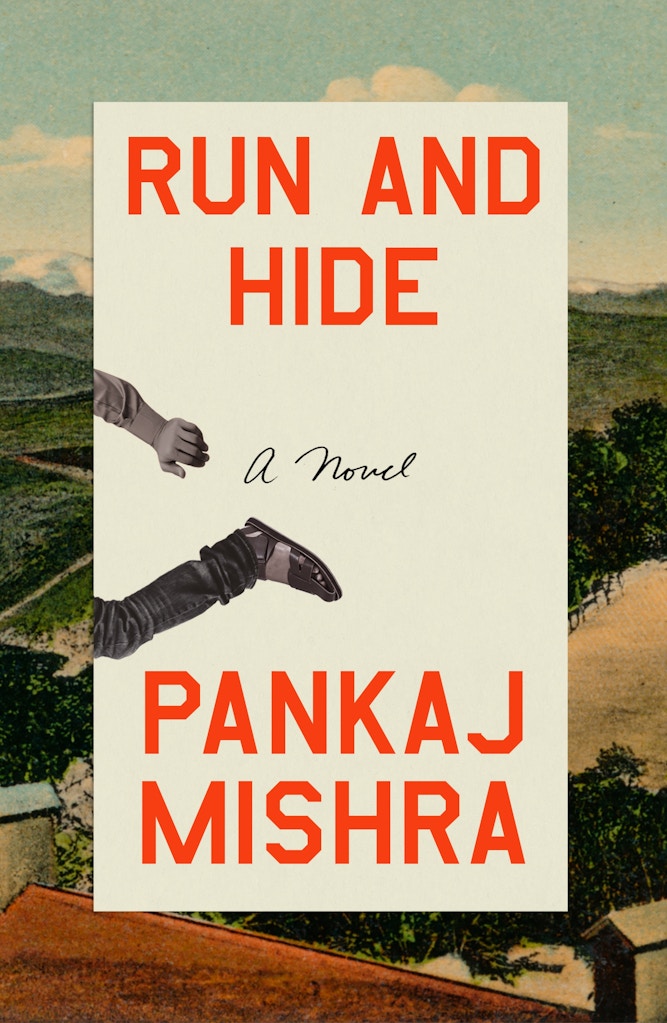
People walk near the India Gate monument amid heavy smog in New Delhi, India, on Oct. 28, 2016.
Photo: Dominique Faget/AFP via Getty Images
After hundreds of years of domination by the West, the world is now primed to have an “Asian Century.” After a long period of decline, demographic and economic trends point to Asia returning to its historic role as the world’s center of economic growth as well as the incubator of political and social change. The particular character of the Asian Century will thus have many consequences for people across the world. There are already strong signs, evidenced in the emergence of ethnonationalist, authoritarian, and religious extremist politics across the continent, that Asia’s rise will not be any less chaotic than the West before it.
Indian author Pankaj Mishra has dedicated his career to analyzing the psychology of Asia’s rising masses, particularly its young men. His latest work, a novel, “Run and Hide,” is his most searing look at the subject yet. The book is a story about the fates of three young Indian men, graduates from the country’s most famous technical university, who rise from poverty to wealth and acclaim within a span of decades. It is a cautionary tale about the pitfalls of success in the developing world and a parable for the dark side of the Asian Century — or centuries — to come.
In decades past, iconic anti-colonial Asian leaders, often educated in the West, overwhelmingly tended to be left wing. They fought against Western colonialism but espoused many ideas that were shared by Western liberals, including a belief in individual freedom, secularism, and universal human rights. It stood to reason that they represented the views of a majority of their compatriots and that the nations they led, once they became wealthy and free, would be bulwarks of liberalism. On a continent where Narendra Modi, Xi Jinping, and Tayyip Erdogan are among the most popular leaders today, that assumption no longer holds any water.
The book is a cautionary tale about the pitfalls of success in the developing world and a parable for the dark side of the Asian Century — or centuries — to come.
The three men in Mishra’s novel — Virendra, Aseem, and the enigmatic main character, Arun — stand as representations of millions of Asians successfully emerging to lives free from material want but wounded by cultural loss and filled with insatiable new psychological desires. To varying degrees, the men try to “trample on the past,” to quote one of the characters’ favorite lines from V.S. Naipaul, by leaving their old cultures behind. They embrace the unfamiliar pleasures of wealth and travel, even as the more slowly ascending masses of their own country turn to reaction. Humiliated by the exploding inequalities newfound wealth like that of the protagonists has helped create, most people channel their rage into support for populist parties that promise to take revenge on their behalf against liberals and minorities.
In various ways, Mishra’s characters find that they are unable to survive in the new world they inhabit. Arriving at the top of the pyramid of Maslow’s hierarchy of needs — the realization of their potential — they discover that the air up there is terrifyingly thin. Their wealth and success briefly elevate them before pushing them down a glide path to self-destruction.

The cover of Pankaj Mishra’s novel “Run and Hide.”
Image: Courtesy of Farrar, Straus and Giroux
There is a political subtext to Mishra’s book that is very important to understanding politics in the developing world: Suffering does not necessarily ennoble. People’s long-sublimated dark urges — for material goods, recognition, sex, revenge — often begin to self-destructively erupt inside them as their material conditions improve.
In one passage from “Run and Hide,” Arun, raised by a poor, abusive father who now supports Modi, addresses the enthusiasms of a liberal friend who grew up wealthy and unselfconsciously devotes herself to various progressive causes. “From what I had seen of non-white people, starting with my libtard-obsessed father, it seemed prudent to fear that, whatever their skin color, the poor and oppressed today were very likely to be persecutors tomorrow — even, sooner,” he tells her. He points out, with some discomfort, that the liberal friend’s progressive platitudes on Twitter do not, to use the example of the Arab Spring, “quite account for the fact that some brave protestors against tyranny in Tahrir Square could turn, given the chance, into rapists.”
Rising living standards in India and China have created publics with strong ultranationalist and even xenophobic views on domestic and foreign policy. These public sentiments are outpacing the capacity of their governments to fully deliver on them, even though they embrace some of those qualities. Throughout the Muslim world, democratic elections have demonstrated repeatedly that religiously conservative parties have widespread support from the masses. Even in smaller Asian countries like Sri Lanka and Myanmar, militarized, authoritarian politics that disregard liberal freedoms and trample on the rights of minorities have proved popular. Countries that were once deeply poor and have now felt themselves gaining a bit of strength have shown that they have potential flaws just as deep as the Westerners whose central role in global affairs they are now gradually supplanting.
Mishra’s work demonstrates that the fallibilities of publics in Asian countries are less proof of their own unique shortcomings than of the commonality of human behavior across the world.
If the mass political awakening of Asia has revealed popular sentiments that have proved deeply illiberal, that does not make Asians so different from Westerners in their political development. Even as it became the richest and most developed region of the world — thanks in part to its ruthless colonial exploitation of Asia and Africa — Europe destroyed itself with two catastrophic world wars driven by nationalism and bigotry. Far-right parties are once again on the march on the continent as they channel popular unease among majority populations over identity and immigration. The entire Donald Trump presidency, punctuated by a now-infamous riot by his supporters at the Capitol, shows that the U.S. suffers deeply from the same trends.
In this way, Mishra’s own work, including “Run and Hide,” demonstrates that the fallibilities of publics in Asian countries are less proof of their own unique shortcomings than of the commonality of human behavior and psychology across the world. If the Asian Century — symbolized by countries like India and China, let alone Vietnam, Bangladesh, Sri Lanka, Turkey, Iran, or Saudi Arabia — is to be less exploitative than the Western-dominated order that came before it, it will require giving the same ruthless scrutiny to emerging countries’ politics and social trends that we have become used to giving the West.
The 21st century is going to be Asian. For it to be successful, it will require a lot of painful criticism of the type that Mishra gives in his novel. The West should bring those assessments to bear when warranted, for our own good — but mainly for theirs.
This content originally appeared on The Intercept and was authored by Murtaza Hussain.
Murtaza Hussain | Radio Free (2022-01-15T12:00:11+00:00) New Novel Glimpses the Dangers Facing the Impending “Asian Century”. Retrieved from https://www.radiofree.org/2022/01/15/new-novel-glimpses-the-dangers-facing-the-impending-asian-century/
Please log in to upload a file.
There are no updates yet.
Click the Upload button above to add an update.